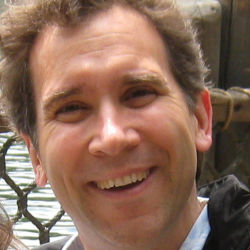
Just how far behind other STEM disciplines are we in computing education? Unlike mathematics and the sciences, we don’t have teachers in every school. We don’t have a wide range of well-defined, standards-based curricula for elementary and primary levels with supportive materials available to every teacher. In the United States, there are few pre-service teacher professional development programs available at Schools of Education, and few states can offer a credential or license to teach that says Computer Science teacher. How long does it take to build up all that stuff?
Here’s one way of measuring the gap:
- The National Council of Teachers of Mathematics (NCTM) is the professional organization of mathematics teachers and administrators in the United States. It was formed in 1920.
- The American Association of Physics Teachers (AAPT) is the professional organization for physics teachers in the United States. It was formed in 1930.
-
The Computer Science Teachers Association (CSTA) was formed in 2005.
The gap may be more than 75 or 85 years, though, because NCTM and AAPT were formed when much of the school infrastructure was already created. There were physics and mathematics teachers in most schools in the United States when AAPT and NCTM were formed. There were physics education and mathematics education faculty helping prepare the next generation of teachers already. We in computing education don’t have those advantages even today.
It’s worth considering what that presence in schools buys those other disciplines. Why would we want to be in school anyway? One of the explicit roles for schools in the United States (and probably many other nations) is to ensure equal access. The first item in the mission of the U.S. Department of Education is to, "Strengthen the Federal commitment to assuring access to equal educational opportunity for every individual." Thomas Jefferson argued that the purpose of public schools was to "diffuse knowledge more generally through the mass of the people." We want computing education to be in schools to give everyone the opportunity to pursue computer science.
Computer science education today is mostly accessed by males who are white or Asian. My wife and colleague, Barbara Ericson, has been getting a significant amount of press for her analysis of the results of the AP CS exam in 2013. There were three states in which no females took the exam. USA Today had a stunning visualization of just how more gender-skewed CS is compared to all other AP exams. In 11 states, no Black students took the exam. In 8 states, no Hispanic students took the exam. Yahoo News! had an amusing piece where they pointed out that kids of Wyoming might be under-represented in CS — not a single student took the exam in that state. CS is not fully accessible in schools yet.
When I talk to my colleague computer scientists about how far behind we are, they sometimes suggest that the way to close the gap is to "create an alternative system." They suggest that we build a computing education system built around (as one of my blog commenters put it) "city recreation departments, after-school programs," and programs like Khan Academy and MOOCs. Certainly, building an alternative education program, especially one wholly or significantly on-line, is an important and interesting research endeavor. But rebuilding an entire education system as a shortcut to getting one subject into schools seems unlikely to be easier or shorter.
Chris Stephenson pointed out in her blog post from last month that university CS faculty don’t understand what schools do and how they do it. What’s worse, I fear that computer scientists don’t understand the necessity of traditional face-to-face schools for providing access. Students who know about computing and have the resources to succeed at it are frequently privileged (see Philip Guo’s excellent post on what technical privilege means). As seen in the recent U. Pennsylvania study of MOOCs, students who succeed at MOOCs tend to already be well-educated. Most people, especially under-privileged students, need a teacher today. Being able to reach an on-line education resource is not the same as access if you need a teacher and the infrastructure of school to help you understand.
Someday, we might provide students on-line supports that are equivalent to an in-person teacher. That’s a research goal. Today, we don’t know how to make a new school framework that still achieves the goal of giving everyone access. Today, if we want more people to have access to computer science education, we need face-to-face schools and in-person teachers. We need to work within the existing school framework to make that happen. And we have a long way to go.



Join the Discussion (0)
Become a Member or Sign In to Post a Comment